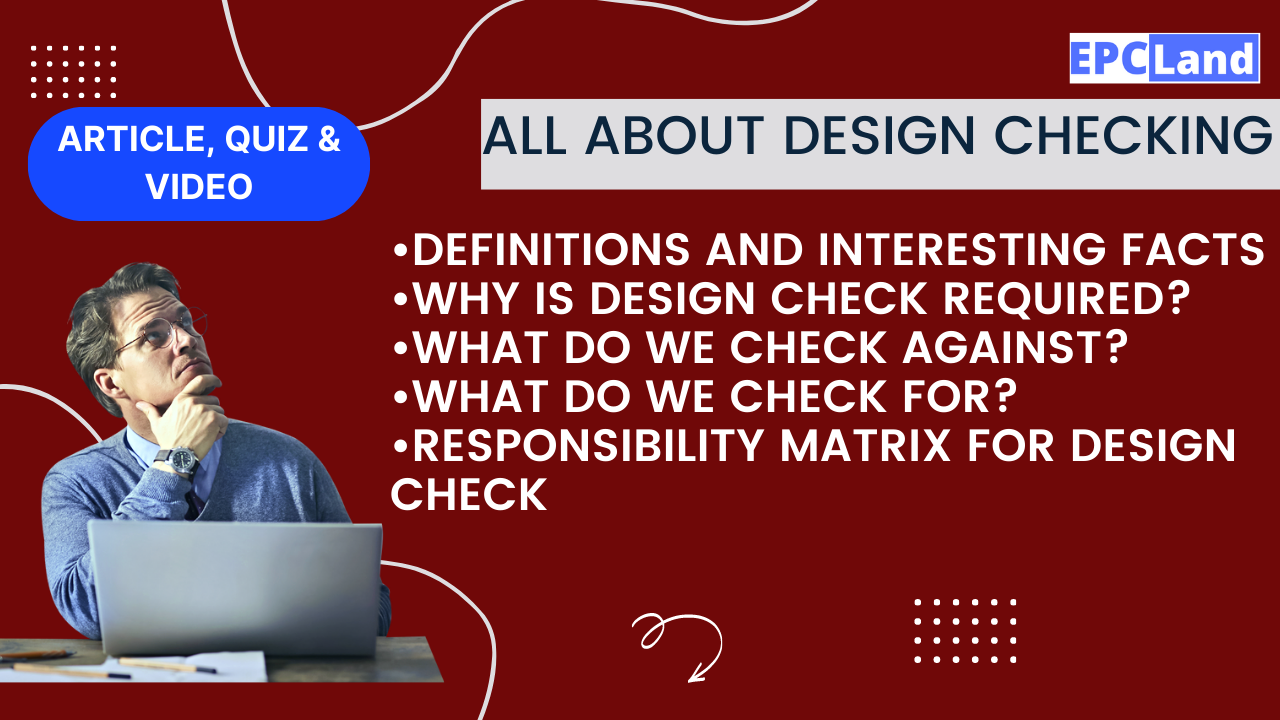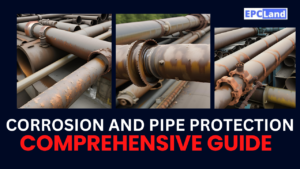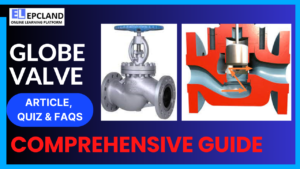Introduction
Design checking is a pivotal process in the realm of engineering and design validation. It ensures that engineering designs are accurate, reliable, and compliant with industry standards. This comprehensive guide explores the definitions, essential aspects, and interesting facts surrounding design checking, shedding light on its significance and various dimensions.
Don’t miss the Complete Course on Piping Engineering: Check Now
By EPCLand.com
Why is Design Checking Required?
Design checking is essential for several compelling reasons:
- Accuracy and Reliability: Engineering designs form the foundation of structures, products, and systems. Design checking ensures that these designs are accurate, reducing the likelihood of errors, malfunctions, or safety hazards.
- Regulatory Compliance: Many industries are subject to stringent regulations and standards. Design checking verifies that designs meet these requirements, helping companies avoid costly legal or operational repercussions.
- Cost Efficiency: Detecting design flaws early in the process prevents expensive rework or recalls down the line. Design checking contributes to cost-effective engineering and manufacturing processes.
- Enhanced Quality: Thorough design checking enhances the overall quality of the final product, system, or structure, leading to improved customer satisfaction and loyalty.
In Design Checking, What Do We Check Against?
In the process of design checking, engineers and quality assurance professionals compare the design documentation against various criteria:
- Design Specifications: The original design specifications provide the foundation for the design. Design checking ensures that the actual design aligns with these specifications.
- Industry Standards: Various industries have established standards that designs must adhere to. Design checking verifies compliance with these standards to ensure safety and quality.
- Functional Requirements: The design should fulfill its intended purpose. Design checking evaluates whether the design meets the functional requirements outlined in the project brief.
- Best Practices: Design checking often involves comparing the design against best practices in the field. This helps identify areas for improvement and innovation.
In Design Checking, What Do We Check For?
During design checking, the focus is on identifying discrepancies, errors, and potential improvements. Some key aspects that are checked for include:
- Dimensional Accuracy: Are the dimensions and measurements accurate and consistent throughout the design?
- Material Selection: Is the chosen material suitable for the intended use? Is it compatible with other materials it interacts with?
- Structural Integrity: Does the design have the required structural integrity to withstand anticipated loads and stresses?
- Interference and Clearance: Are there any components that interfere with each other or lack proper clearance?
- Safety Considerations: Does the design account for safety measures, such as load limits, emergency stops, and fail-safes?
Responsibility Matrix for Design Checking
A responsibility matrix outlines the roles and responsibilities of different individuals or teams involved in the design checking process. It ensures accountability and a streamlined workflow. Typically, the matrix includes:
- Design Engineers: They create the initial design and are responsible for ensuring its accuracy and feasibility.
- Design Checkers: These professionals perform the design checking process, verifying the design against standards, specifications, and requirements.
- Quality Assurance: QA teams oversee the entire design checking process, ensuring that it’s conducted thoroughly and consistently.
- Project Managers: They coordinate the design checking process, allocate resources, and ensure deadlines are met.
FAQs
Q1: What is design checking? A1: Design checking is the process of verifying and validating engineering designs to ensure accuracy, compliance, and quality.
Q2: Why is design checking important? A2: Design checking prevents errors, ensures regulatory compliance, enhances quality, and saves costs by identifying design flaws early.
Q3: What criteria are design checked against? A3: Designs are checked against specifications, industry standards, functional requirements, and best practices.
Q4: What aspects are checked during design checking? A4: Design checking assesses dimensional accuracy, material selection, structural integrity, interference, clearance, and safety considerations.
Q5: Who is responsible for design checking? A5: Design engineers, design checkers, quality assurance teams, and project managers all have roles in the design checking process, as outlined in a responsibility matrix.
Conclusion
Design checking is a cornerstone of engineering and design validation, ensuring that designs are accurate, compliant, and reliable. By verifying designs against specifications, standards, and functional requirements, this process enhances quality and prevents costly errors. The responsibility matrix further streamlines the design checking process, ensuring accountability and a smooth workflow. Understanding the significance of design checking and its associated factors is essential for maintaining high standards of engineering excellence and delivering safe, functional, and high-quality products and systems.
Recommended courses (Published on EPCLand)
- Basics of Piping Engineering
- Piping Layout Engineering
- Piping Material Engineering
- Piping Stress Analysis
- Complete Course on Piping Engineering
- Material Requisitions
- Piping Material Specifications
- Valve Material Specifications
Don’t miss the published articles on following:
Related Video
Attempt Quiz
Question 1:
What does ASTM A333 refer to?
Explanation: ASTM A333 is a standard specification for seamless and welded steel pipe for low-temperature service. It covers nominal (average) wall thickness pipe and is commonly used in various industries.
Question 2:
What is the minimum impact energy requirement for ASTM A333 Grade 6 steel?
Explanation: ASTM A333 Grade 6 steel requires a minimum impact energy of 27 J (19.9 ft-lbf) at -50°C (-58°F) to ensure its suitability for low-temperature service.
Question 3:
Which type of steel is commonly used in ASTM A333 Grade 3 and Grade 6?
Explanation: ASTM A333 Grade 3 and Grade 6 commonly use Carbon-Manganese Steel, which provides good low-temperature toughness and weldability.
Question 4:
What is the intended application of ASTM A333 steel pipes?
Explanation: ASTM A333 steel pipes are primarily intended for low-temperature service, making them suitable for applications such as cryogenic storage tanks and other environments with low temperatures.
Question 5:
Which type of ASTM A333 steel pipe is intended for use at extreme low temperatures?
Explanation: ASTM A333 Grade 1 steel pipes are intended for use at extreme low temperatures, making them suitable for applications requiring exceptional toughness and impact resistance in harsh conditions.



